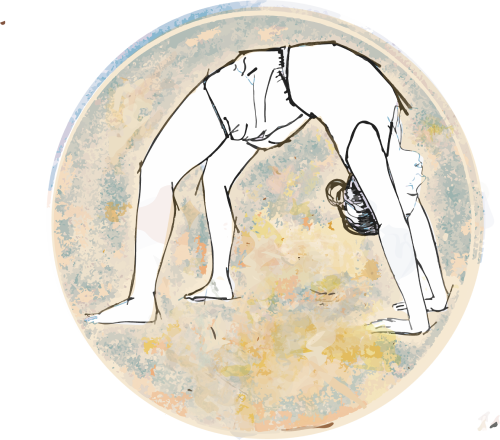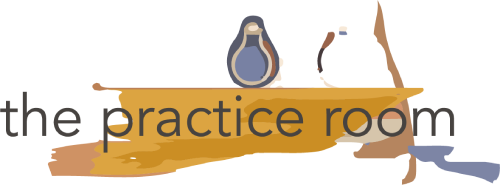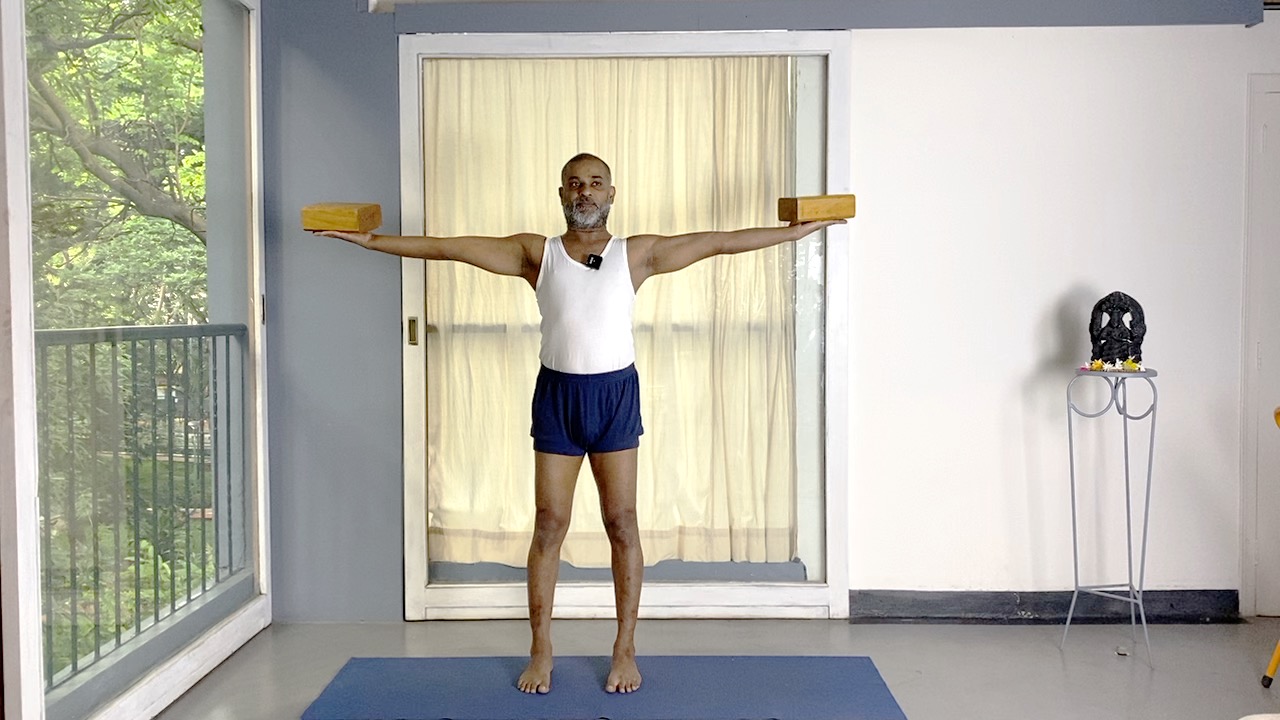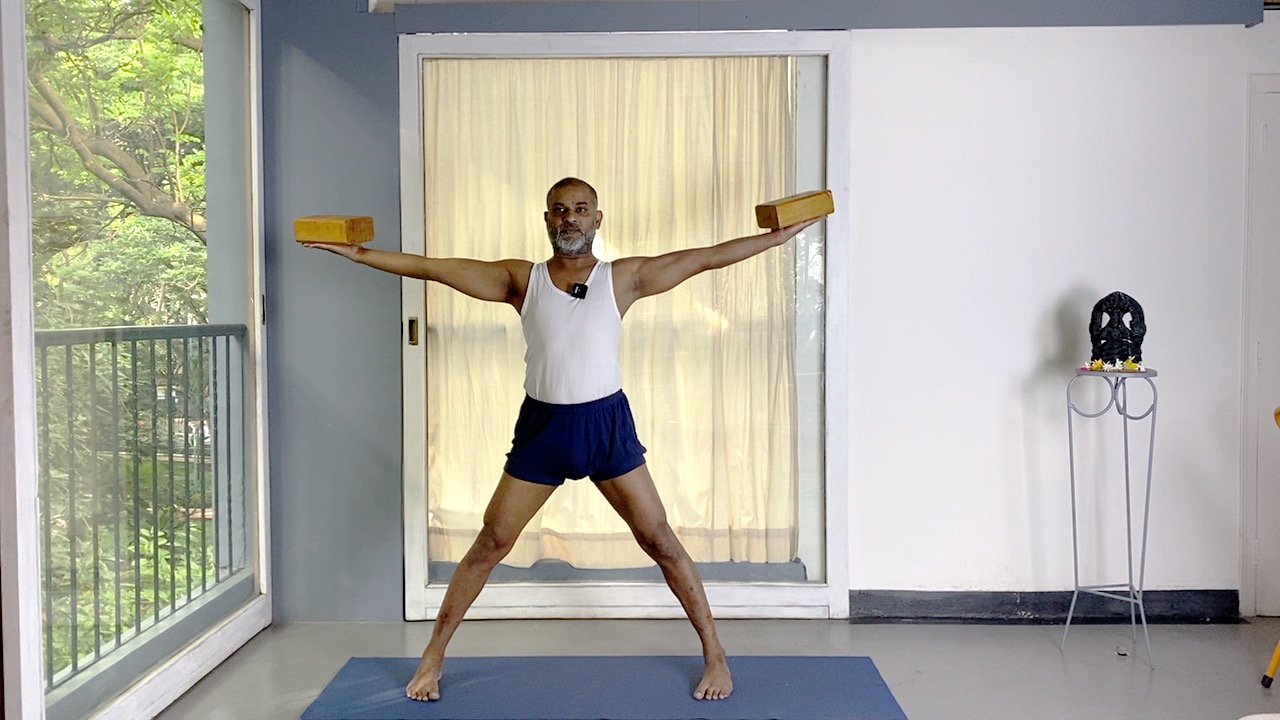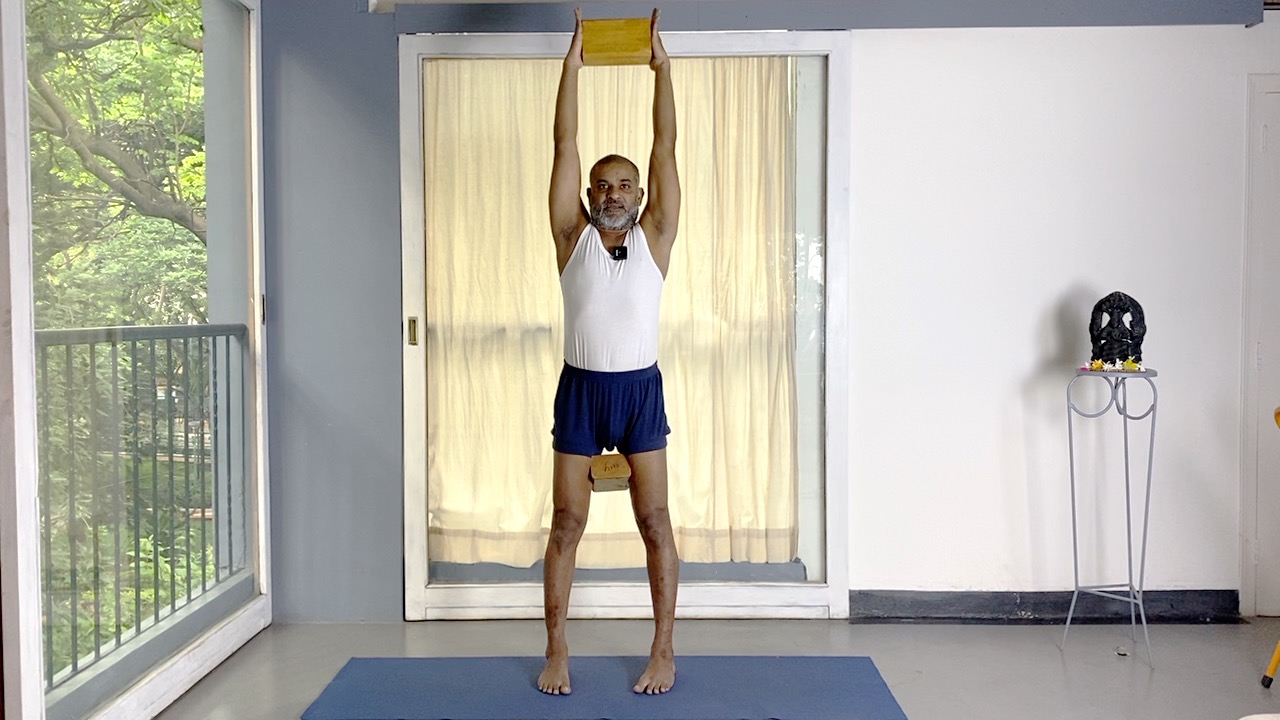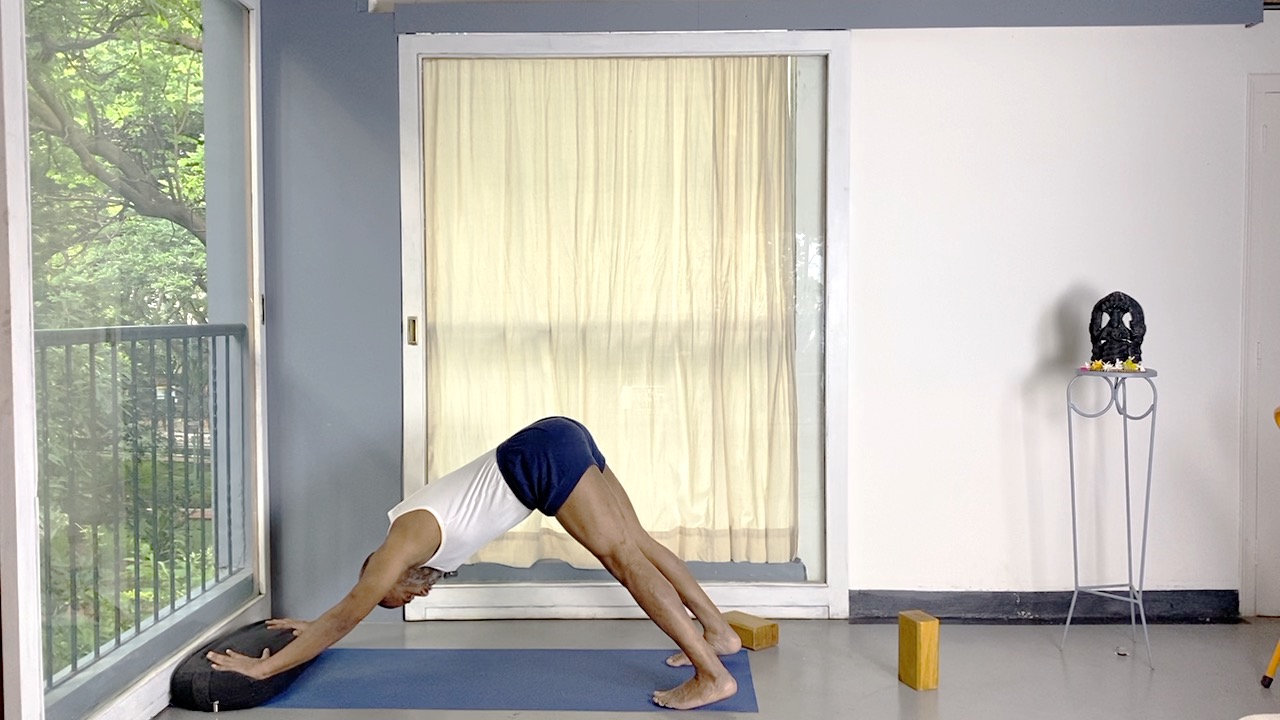A regular practice of inversions is believed to release tension, increase circulation and energy levels, and strengthen muscles. It’s also thought to promote emotional growth and calm the mind. An agitated mind will surely benefit from a practice of inversions. Arms play a major role in inverted positions.
Our lower limbs (legs) and our upper limbs ( arms) are attached to our trunk through ball and socket joints – to give maximum possibility of movement of these limbs. However, unlike the hip socket , the shoulder socket is shallow. This gives the arms a wider range of movement, but also makes the shoulder joint more prone to injury. It becomes all the more important to strengthen its connection with the shoulder-blades, and to the spine, in order increase the efficiency of arm use.
This session goes into some anatomical explanations, and also some subjective experiences of the similarities between these joints, and explores and ready the arms through ‘extension’ action.
Note:
Those having shoulder injuries are advised caution in overhead arm positions

